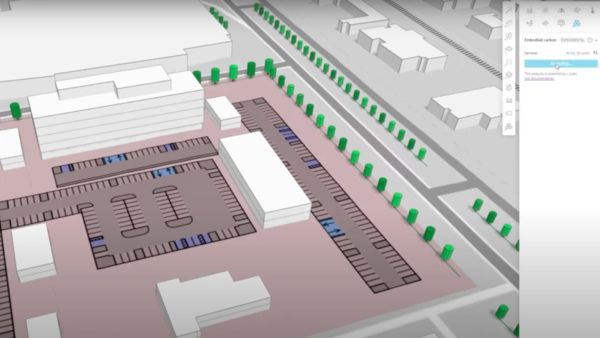Subcontractors working on major BIM projects could interact with the main BIM model via their own “satellite” Common Data Environments, being developed as one of 10 digital construction projects recently grant-funded by Innovate UK.
The 18-month “Tier2Tier” project is the work of a consortium led by 4Projects, along with Vinci Construction, M&E subcontractor NG Bailey, the Specialist Engineering Contractors’ Group and the University of Northumbria.
John Adams, BIM project manager at 4Projects, explained that the aim was to address the “considerable difficulties in getting information down the supply chain. Usually the main contractor has the model, and everyone else passes information around via email and FTP sites.”
The new cloud-based service, due to be commercially available in autumn 2016, would allow key subcontractors to operate a satellite CDE, which would only host data from the main model relevant to their package, for instance M&E.
The Tier 2 subcontractors would then be able to invite Tier 3/4 suppliers and manufacturers to access the slimmed-down design files, and submit their own estimates, designs and COBie data.
The finalised data would then be uploaded into the main contractor’s BIM model, which would be “the single source of truth”.
Adams said: “It’s a more collaborative approach to building up the data. Everyone has their own satellite, where they can get the information right – checking it against the BIM Execution Plan and file-naming conventions. Everyone would work to the same protocols, but specialist subcontractors would be able to work in their own area.
“NG Bailey, for instance, might not want to work in Vinci’s environment, [because] they will have their own documents, checking procedures and processes. But Vinci would still control all the overall workflows and task management.
“NG Bailey might want to share the drawings with six of its own suppliers and 20 manufacturers. But once all the information [they provide] has passed all the checks, it flows up and down the supply chain.”
The linkage with SEC Group, he said, gave the project access to “a multitude of non-Tier 1 contractors and suppliers”.
BIM+ asked whether the system will only be available to Tier 2 subcontractors working on projects where the main contractor was adopting 4Projects’ BIM environment – known as 4BIM – or whether it could be operated independently and then aligned with a different BIM CDE.
The answer was that the Tier2Tier project would facilitate independent satellite CDEs.
Adams said: “The whole supply chain is unlikely to buy 4Projects, so the point of our bid is to create an inter-CDE language, so we should be able to pass data from CDE to CDE. So we want to create an open-source language, so that the CDE could align with Asite, for instance.
“At the moment, you get BEPs that say ‘everyone will use Revit’ – we don’t want to move from that to a situation where we’re saying ‘everyone should use 4BIM’.”
Adams said that the vast majority of projects are still using FTP sites such as Dropbox and email to transfer information along the supply chain. “There’s a large part of the industry out there looking for solutions that suit them.”
Everyone has their own satellite, where they can get the information right – checking it against the BIM Execution Plan and file-naming conventions. Everyone would work to the same protocols, but specialist subcontractors would be able to work in their own area.– John Adams, BIM project manager, 4Projects
Comments
Comments are closed.
















At first glance this sounds great but wait a second, does this then dilute and move away from what a CDE is meant to be, which is a collaborative/interoperable tool to be utilised and used by all parties involved with a project.
Why then do we need a Tier 2 CDE?
Hi Terry,
Good question which I’m happy to answer.
The model of a single CDE for the whole project where everyone has access is still in play, as per the B555 Roadmap. But the master CDE is ultimately controlled by a Tier 1 project participant. This has meant the tools within modern CDEs like task management, workflow processes and libraries of objects and literature are beyond the use of the supply chain who revert to using their C: drive and email. The concept of a hierarchical structure of cloud based environments will enable every business to align their business procedures with BIM execution plans whilst creating reusable lean processes.
These are interlinked CDEs which are intended to add speed, clarity and accountability to the project supply chain for processes such as return of tender and submission of model objects.
In my mind this looks like a project ‘nervous system’ with the master CDE as the ‘brain’.
Thanks for the question
John
Sounds unnecessarily complex for all but the largest of projects! I agree with the previous comment that a single CDE should be scalable and accessible to all tiers without resorting to separate CDE’s.